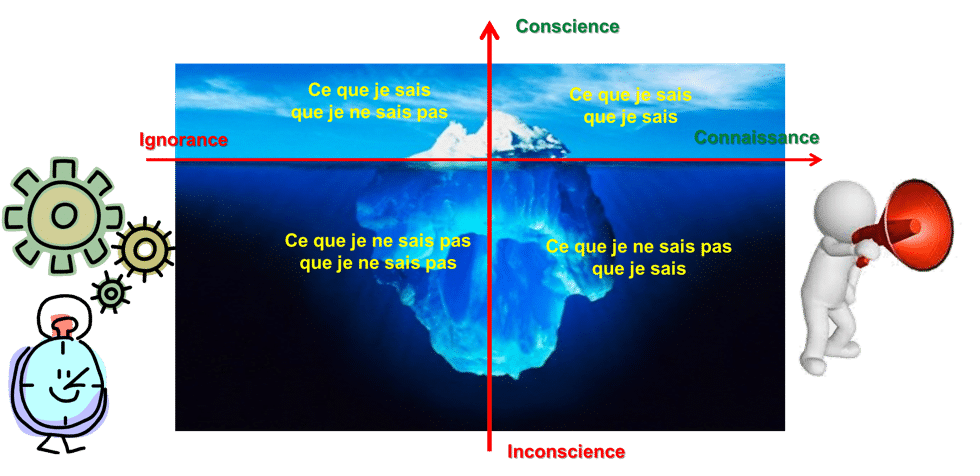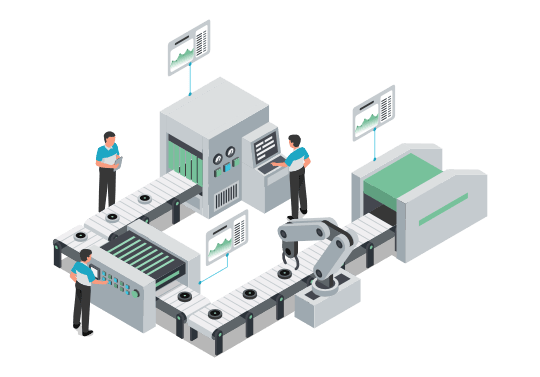When faced with a problem, you need to be able to identify what kind of problem it is. This enables you to adapt the right problem-solving method. Broadly speaking, there are two types of problem:
Type 1: return to an initial state

The desired system performance has already been achieved by the system itself, but is no longer achieved, or is only achieved occasionally. In this case, we find ourselves in a "return to an initial state" type problem. In this case, we need to identify the parameters that prevent the system from reaching its ideal state.
Type 2: improve performance

The desired system performance has never been achieved. In this case, the problem is one of "improving system performance". This type of problem is generally more complex than type 1, where the DMAIC methodology is used. In this section, we'll focus more specifically on problems of the "Return to Initial State" type, and we'll look at the tools that will enable us to solve the problem as efficiently as possible.
Different types of problems (Vinck's Iceberg)
Solving a problem means getting people and processes to talk, but you have to know when. D.Vinck summarized the state of our knowledge through the notion of an iceberg:

The tip of the iceberg represents our consciousness, what we're aware of and can quickly either give an answer to, or say we don't know the answer but know how to find it.
Then this iceberg is separated into two parts, representing knowledge. On the right, what we know, consciously or unconsciously; on the left, what we don't know.
Obviously, the tools used will vary depending on the type of problem you're facing.
Type 1: We know the answer to the problem
In this case, simply apply
Type 2: We know how to find the answer to the problem
In this case, just look for it.
These two cases generally represent 80% of the problems we face. We don't notice them because they are solved very quickly. The difficulty comes when we're not aware of the answer to the problem. The remaining problems represent only 20% of the problems, but unfortunately 80% of the time, because they are more complicated to solve.
Type 3: We don't know the answer, but it's buried in our collective unconscious.
That is, at least one person knows why it's not working properly.
In this case, we need to get people talking, using tools that will enable us to dig deep into our unconscious to find the root cause of the problem. The tools we use in this case are the QQOQCP, the 5 Whys, brainstorming, etc. Tools that get people talking.
The reasoning used in this case is forward reasoning:
- We make assumptions
- Hypotheses are tested with data
Type 4: We don't know the answer and even if we look hard enough we don't know the answer to the problem.
In this case, there's no point in getting the men to talk, because brainstorming is useless because we don't know the answer.
In this case, we need to get the processes talking, using tools that will enable us to dig deeper into the system's workings to understand the origin of the problem. The tools we'll be using in this case are multivariate, inversion testing, experimental design, etc.... Tools that make processes talk.
The reasoning used in this case is backward:
- We generate data that will highlight the origin of the problem
- We make assumptions
- We test the hypotheses
This reasoning is quite different, and we'll show in the next chapter that it's far more powerful.
Conclusion
Most companies waste a lot of time thinking that all the problems they face are Type 3 problems, when in fact half of them are Type 4 problems. In this case, the tools used are absolutely the wrong ones, because they try to make people talk when they should be making processes talk, and the time lost is considerable. When faced with a Type 4 problem, you need to change your thinking and use the statistical tools at your disposal to make the data speak for itself. From training can help you choose the right problem-solving method.
Backward vs Forward reasoning
As we've just seen, two types of reasoning can be used to solve a problem: forward and backward.
While the first line of reasoning is very useful for solving "simple" problems where we know the answer, it doesn't apply when the answer is unknown. In this case, like Sherlock Holmes, we need to generate the clues that will enable us to find the causes of the problem. The objective is as follows:
"Once you've eliminated the impossible, it doesn't matter what's left, however improbable it may seem, it must be the truth."
*Reasoning Backward, Gregg Young
The aim is to generate clues that will reveal the main source of the problem. There are three types of contrast:
- Intra-unit: within the same product, there are contrasts: one part of the product is good, while another part is bad.
- Unit to unit: One product is good, the next is bad
- Period to period: Process performance varies over time, sometimes 100% of products are good while at other times only 80% of products are good.
Multi-vari is generally the right tool to highlight the main cause of performance variation. To use multi-vari, you need to measure 3 to 5 consecutive parts, usually every hour, several times a day for a few days. This usually provides enough data to highlight the main contrast, even if more parts are sometimes required.
Once the main contrast has been identified, the study can be continued using the following tools:
- Main contrast = intra-unit and defect concentration diagram
- Main contrast = unit to unit and inversion test or pairwise comparison
- Main contrast = period-to-period and pairwise comparison


